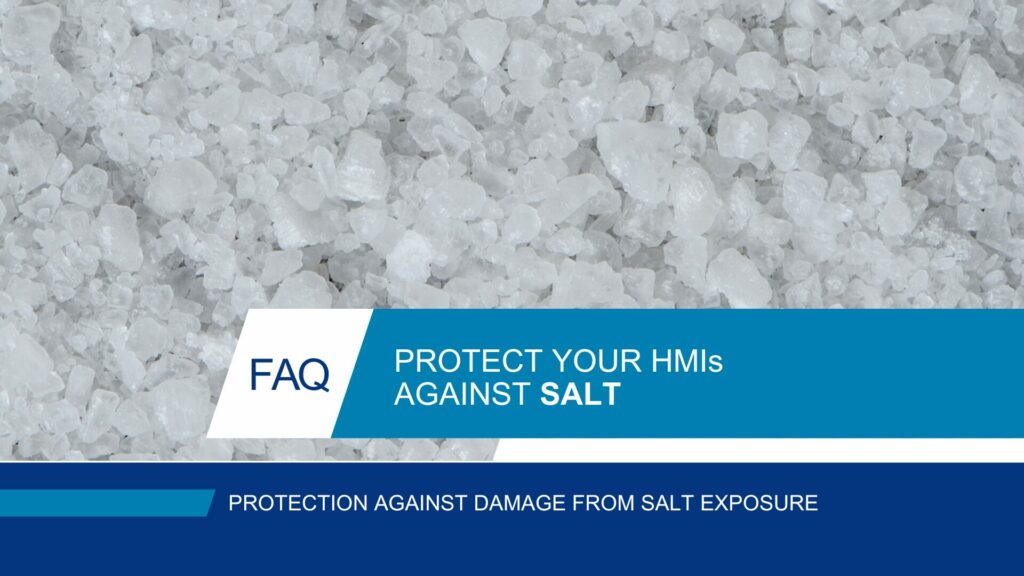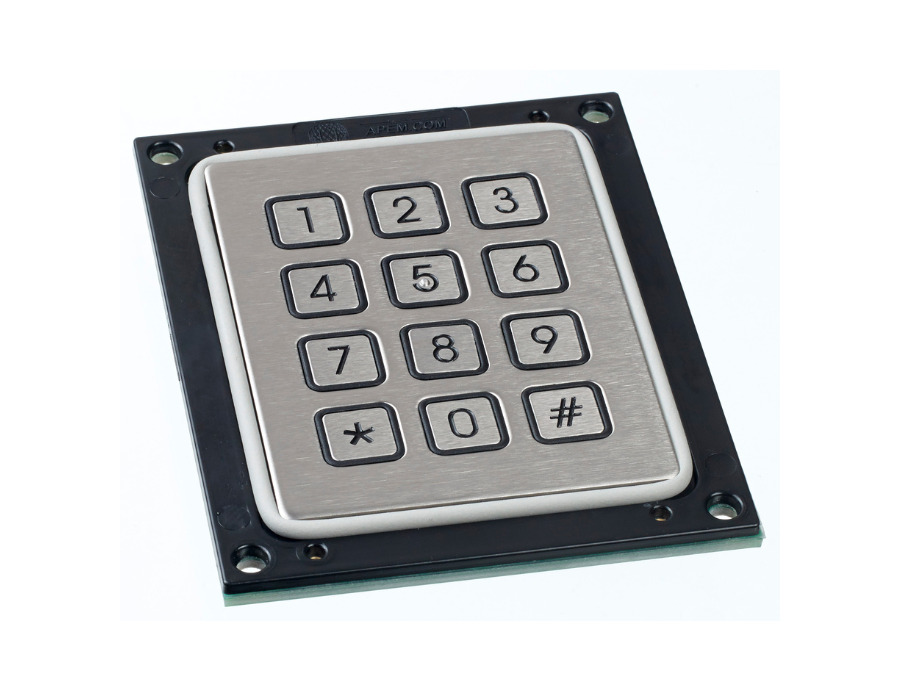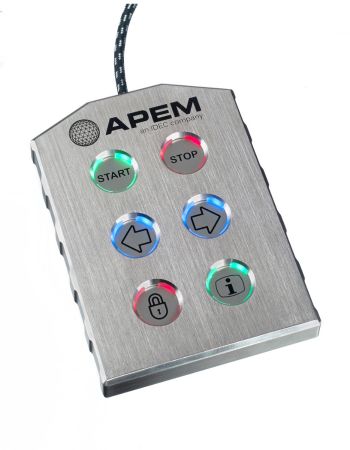When your application is used outside near the coast, for example at a port, or during winter when the roads need cleaning, it will be exposed to salt. See the video or read below for more information on what kind of damage salt can do to HMIs and how to prevent it.
What kind of damage can salt do to HMIs?
There are two main concerns to consider – corrosion and salt dust.

Corrosion
Metal solutions are a robust and aesthetic design option. However, salt water can make the metal rust, which makes it fragile and easier to break under pressure or under impact.
The rough surface of the corroded panel is also a safety hazard. The sharp edges can lead to cuts and the uneven surface provides a great place for bacteria to grow.
Rust can also change the shape of the key and thus block the mechanism.
Furthermore, markings can also be impacted making operating the application more complicated and less efficient.

Salt dust
When salt settles on a surface it creates a layer that can cover up markings and block keys. This can render the application unusable.
How to protect against damage from salt exposure?

Stainless steel or aluminum
Metal is still a good option. It is, however, of utmost importance to use high-grade stainless steel or aluminum for your solution to make sure it is protected against corrosion.

As little space as possible
Furthermore, you want as little space between the keys and the front panel as possible so the salt cannot enter. Limited room for salt to settle will also result in salt grains falling off the button once the key is activated.
Throughout the years, APEM has designed many solutions for ports and special vehicles. We have the knowledge and capacity to conduct salt spray tests.
Excellent solutions for ocean ports and special vehicles:
Please note that control panels for boats are typically lightweight solutions made of plastic and rubber. Therefore, the damage from salt is more aesthetic rather than functional.





